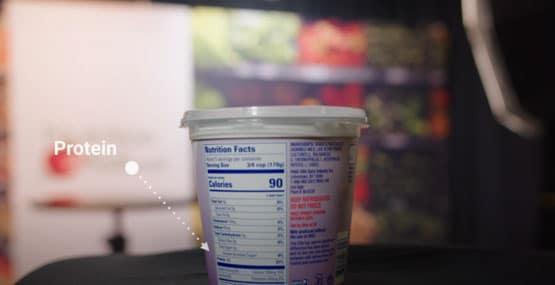
6 easy ways to shop for milk and dairy products
Dairy products are a common and nutritious part of many people's diets. When shopping for milk and milk products, it's important to make informed choices that meet your family's needs and preferences. The good news is that it's relatively simple as we'll also show you in our Dairy Shopping video that's part of our Welcome to the Grocery Store series.
- Choose Low-fat or Fat-free options: When selecting dairy products, low-fat or fat-free options have less saturated fat, which is beneficial for heart health. Look for labels indicating "low-fat" or "fat-free" on milk, yogurt, and cheese. You can still enjoy the taste and benefits of dairy without consuming excessive saturated fats.
- Consider lactose intolerance or milk allergy: If someone in your family has lactose intolerance or a dairy allergy, there are alternatives available. Lactose-free milk and dairy-free milk-like beverages, such as pea milk or soy milk, can be suitable substitutes. These options provide similar nutrients and can be found in the refrigerated or non-refrigerated sections of the store. Read labels carefully to ensure they are free from dairy or lactose if you have specific dietary restrictions.
- Be careful for your kids: Some milk-like beverages are great. Others aren't good substitutes for kids who need protein and fuel to be active and grow. Unsweetened almond milk has only 1 gram of protein and 30 calories in an 8-ounce glass, compared to the 8 grams of protein and 90 calories in the same amount of fat-free cows' milk or 8 grams of protein and 70 calories in unsweetened pea-protein milk. Note too that when they are sweetened, what they're getting is extra sugar.
- Look for Calcium and vitamin D fortified products: Calcium and vitamin D are essential nutrients found in dairy products. When shopping for dairy, check if the products are fortified with these nutrients. Look for labels indicating "calcium-fortified" or "vitamin D added." This is particularly important for those who may not consume enough dairy or have limited sun exposure, as vitamin D helps with calcium absorption.
- Read labels for added sugars: Be mindful of added sugars in certain dairy products. Flavored yogurts and sweetened milk can contain high amounts of added sugars, which can contribute to health issues like obesity and tooth decay. Read the nutrition labels and ingredient lists carefully. Choose unsweetened or lightly sweetened options, or consider adding your own natural sweeteners, such as fresh fruits or a drizzle of honey, to control the amount of added sugars.
- Consider organic or grass-fed options: Organic dairy products are produced without the use of chemical pesticides, hormones, or antibiotics. If you prefer organic or have concerns about potential chemical exposure, look for labels indicating "organic." Grass-fed dairy products come from cows that primarily graze on grass, potentially offering a higher content of omega-3 fatty acids. These options may be available in select stores and can provide additional benefits for those who prefer them.
Conclusion: Shopping for dairy products can be a healthy and enjoyable experience when done mindfully. Choose low-fat or fat-free options, consider alternatives for lactose intolerance or allergies, and look for calcium and vitamin D fortified products. Read labels to assure adequate protein, monitor added sugars and consider organic or grass-fed options based on personal preferences. By making informed choices, as you'll also learn in our Dairy Shopping video, you can incorporate dairy products into a balanced and nutritious diet.





